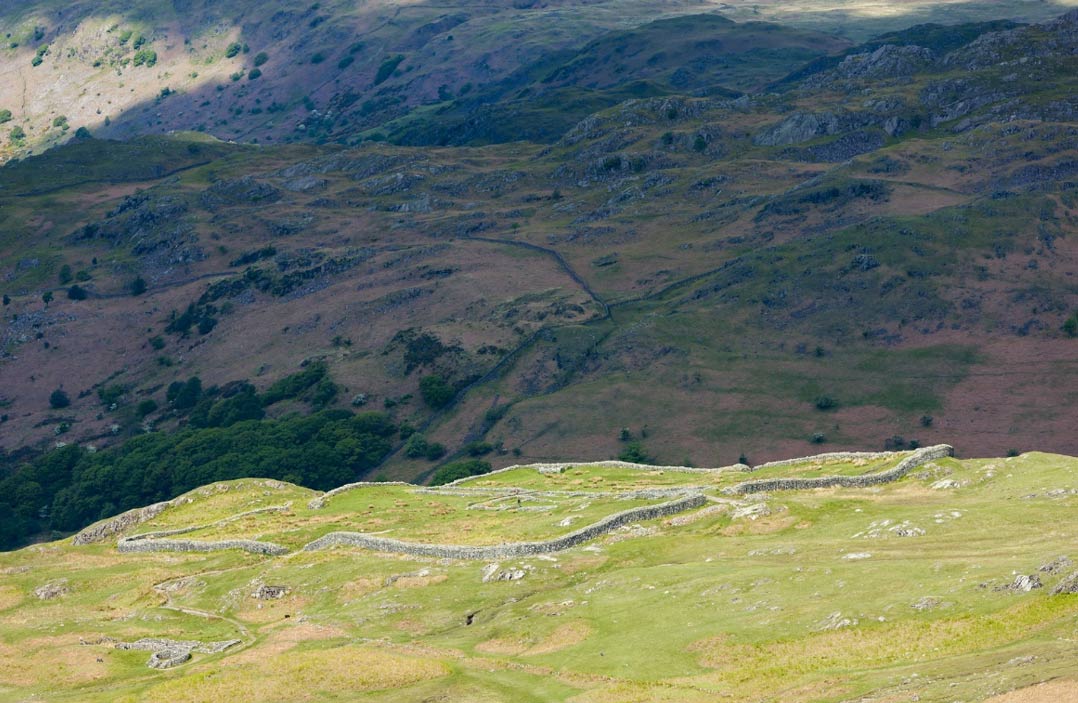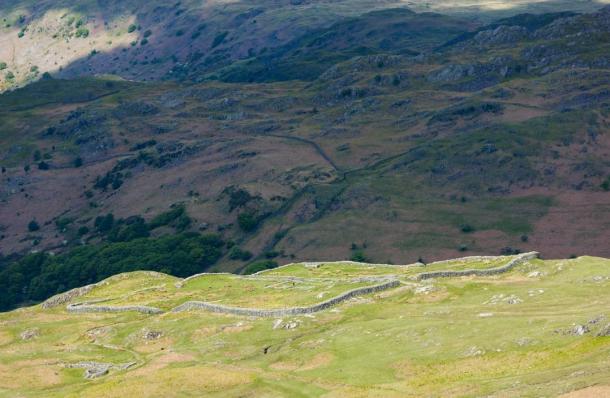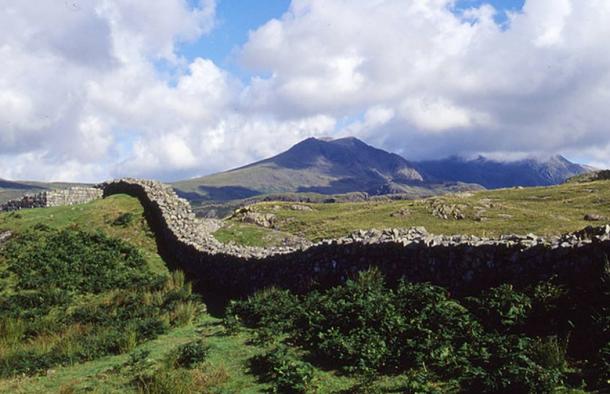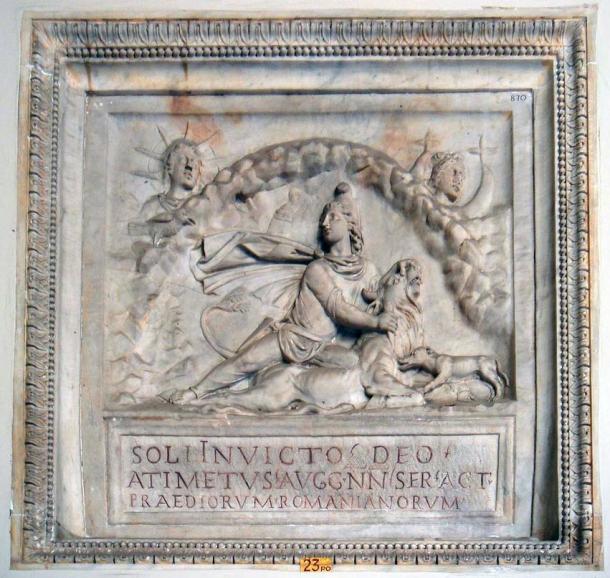Ancient Roman fort in England may have been constructed to pay homage to Mithra or Sol Invictus
A new study shows that the builders of an ancient Roman fort in northern England aligned it so the sun’s rays shone through the gates at dawn and sunset on the winter and summer solstice. The researchers suggest that that construction of the fort was designed in such a way for the inhabitants to engage in sun worship and pay homage to solar deities.
A new study shows that the builders of an ancient Roman fort in northern England aligned it so the sun’s rays shone through the gates at dawn and sunset on the winter and summer solstice. The researchers suggest that that construction of the fort was designed in such a way for the inhabitants to engage in sun worship and pay homage to solar deities.

The fort, now in ruins, was near Hardknott Pass overseeing the River Esk on the northern frontier of the Roman Empire during the reign of Hadrian, 117 to 138 A.D, located in what is now Cumbria, England.

The Roman Fort is located in the picturesque Hardknott Pass of Cumbria, England. Source: BigStockPhoto
The researcher who made the discovery by studying the fort’s alignment using online software, said it could have been built in homage to solar deities Mithra or Sol Invictus. Mithra, whose cult was solely male and who was worshipped especially by soldiers, was so powerful the sun was believed to kneel to him.
The fort, overlooking the Eskdale Valley, was arranged in a square with the four gates in the center of the four walls. During the annual June 21 summer solstice sunrise, the sun’s rays shone through the fort’s northeastern and southwestern gates. At sunset on the longest day of the year, sun rays shone through the northwestern and southeastern gates, physics researcher Amelia Carolina Sparavigna wrote in the journal Philica.

Hardknott Roman Fort. Credit: Google Maps, 2014
On the December 21 winter solstice, or the lowest point of the sun in the sky and the shortest day of the year, the sun rose in alignment with the southeastern and northwestern gates and set in line with the southwestern and northeastern gates, she wrote.
The fort’s “distinctive layout … [has] an orientation of its axes to solstices, so that, through its four gates, we could imagine to see sunrise and sunset on those days,” she wrote in Philica.

Walls of Hardknott Roman Fort (Wikimedia Commons)
Sparavigna said the four towers in the corners of the fort were aligned with the cardinal directions. The fort sat on the landscape in a diamond shape, with one corner and its tower almost directly north, one to the south and the other two to the east and west.
If the idea of the fort’s layout was to place its towers at corners in the north, south, east and west, it may be a coincidence of nature that the rising and setting sun’s rays shone nearly exactly through the gates to the northwest, northeast, southwest and southeast during solstices. Nevertheless, Sparavigna told Live Science that it was common for cultures at the time to align their buildings to solar and celestial events.
"An orientation of sacred places to sun and sky is common to several religions," Sparavigna told Live Science. She said it’s "quite possible that the Hardknott fort has a symbolic homage to the sun. The god could be Sol, the ancient Roman god of the sun, which evolved [into] Sol Invictus." Sol Invictus means “unconquered sun.”

Relief depicting Roman Mithras, described as sol invictus (the unconquered sun god). (Wikimedia Commons)
She said another god, Mithra, is possibly the inspiration for the fort’s solar construction. Mithra was a Persian god that became popular with Roman soldiers and the male general populace. Mithra himself was referred to as Sol Invictus in the Roman Empire.
“The [Mithra] cult was all male. There were seven degrees of initiation. Different ritual meals were associated with each stage,” says Tertullian.org. “It is certain that Mithras is born from a rock. He is depicted in his temples hunting down and slaying a bull. … He then meets with the sun, who kneels to him.”
The New Larousse Encyclopedia of Mythology said in pre-Zoroastrian Persia, Mithra was associated with the supreme being Ahura and “was a god of the first magnitude.” His wisdom and military valor were unsurpassable. “He possessed not only strength but at the same time knowledge, for in essence he was Light. As such he led the solar chariot across the sky,” the encyclopedia says.
Sol Invictus was a later Roman sun deity who was separate from Mithra. He was patron of soldiers. Scholars disagree as to whether he is simply a newer version of the old Latin cult of Sol, or the sun as god.
fonte: @edisonmariotti #edisonmariotti http://www.ancient-origins.net/news-history-archaeology/ancient-roman-fort-england-may-have-been-constructed-for-mithra-020156
Featured image: Hardknott Roman Fort in Cumbria, England. Source: BigStockPhoto

Nenhum comentário:
Postar um comentário